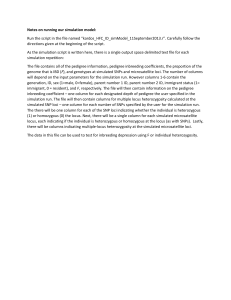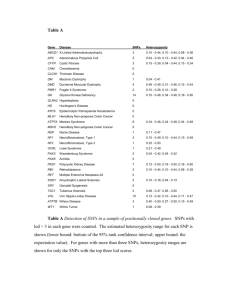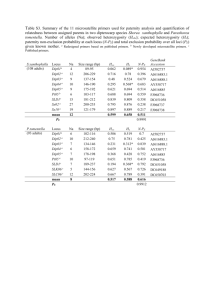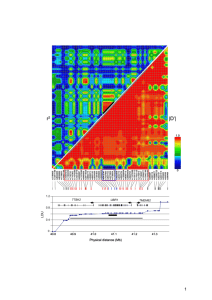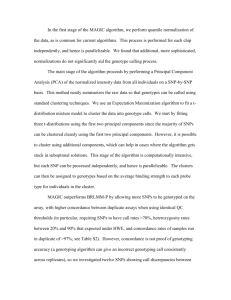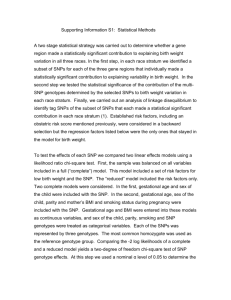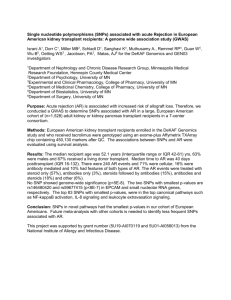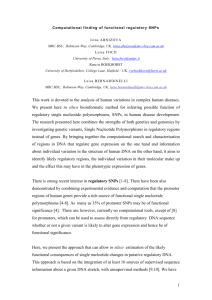Molecular Evolution
advertisement
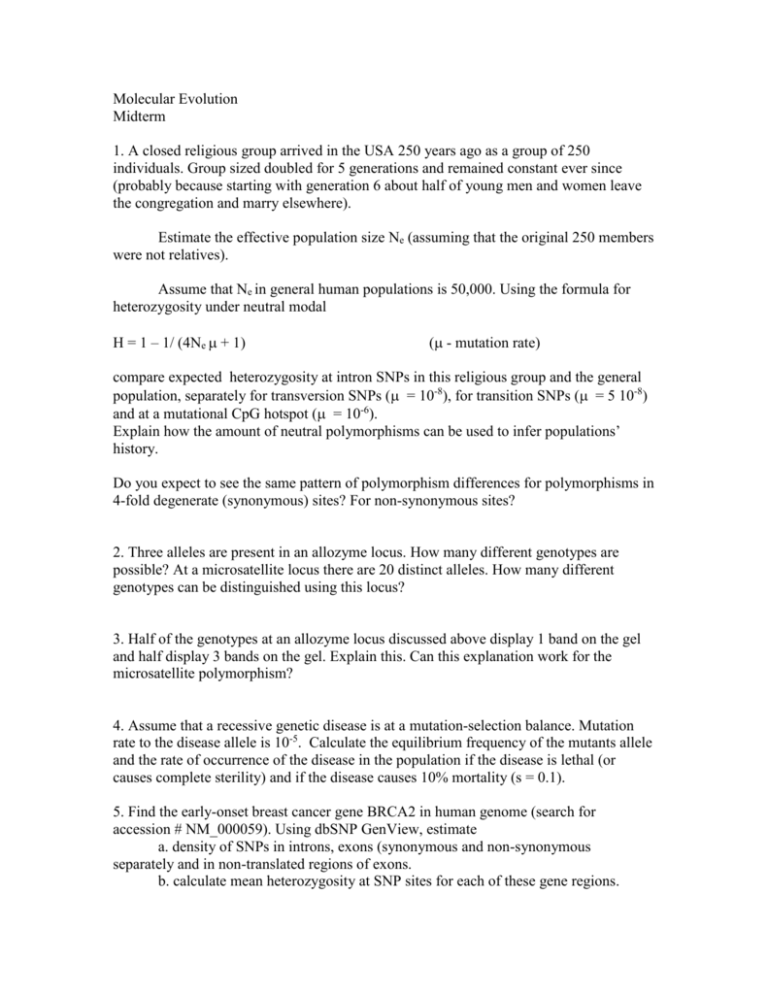
Molecular Evolution Midterm 1. A closed religious group arrived in the USA 250 years ago as a group of 250 individuals. Group sized doubled for 5 generations and remained constant ever since (probably because starting with generation 6 about half of young men and women leave the congregation and marry elsewhere). Estimate the effective population size Ne (assuming that the original 250 members were not relatives). Assume that Ne in general human populations is 50,000. Using the formula for heterozygosity under neutral modal H = 1 – 1/ (4Ne + 1) ( - mutation rate) compare expected heterozygosity at intron SNPs in this religious group and the general population, separately for transversion SNPs ( = 10-8), for transition SNPs ( = 5 10-8) and at a mutational CpG hotspot ( = 10-6). Explain how the amount of neutral polymorphisms can be used to infer populations’ history. Do you expect to see the same pattern of polymorphism differences for polymorphisms in 4-fold degenerate (synonymous) sites? For non-synonymous sites? 2. Three alleles are present in an allozyme locus. How many different genotypes are possible? At a microsatellite locus there are 20 distinct alleles. How many different genotypes can be distinguished using this locus? 3. Half of the genotypes at an allozyme locus discussed above display 1 band on the gel and half display 3 bands on the gel. Explain this. Can this explanation work for the microsatellite polymorphism? 4. Assume that a recessive genetic disease is at a mutation-selection balance. Mutation rate to the disease allele is 10-5. Calculate the equilibrium frequency of the mutants allele and the rate of occurrence of the disease in the population if the disease is lethal (or causes complete sterility) and if the disease causes 10% mortality (s = 0.1). 5. Find the early-onset breast cancer gene BRCA2 in human genome (search for accession # NM_000059). Using dbSNP GenView, estimate a. density of SNPs in introns, exons (synonymous and non-synonymous separately and in non-translated regions of exons. b. calculate mean heterozygosity at SNP sites for each of these gene regions.
